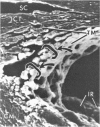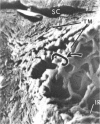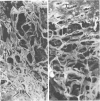Abstract
Tissue from ten eyes with infantile glaucoma and from 40 normal eyes of fetuses and infants without glaucoma were examined by light and electron microscopy. In normal development, the corneoscleral coat grows faster than the uveal tract during the last trimester, leading to a posterior migration of the ciliary body attachment from Schwalbe's line (5th month) to the scleral spur (9th month), and then to a location behind the scleral spur (postnatally). In infantile glaucoma, the insertion of the anterior ciliary body and iris overlaps the trabecular meshwork, similar to the late fetal position. The trabecular sheets are perforated, and there is no membrane over the surface of the trabecular meshwork. The trabecular beams are thicker than in normal infant eyes. There is both histologic and clinical evidence of traction on the iris root exerted by the thickened trabecular beams. These findings suggest that in congenital glaucoma the thickened beams had prevented the normal posterior migration of the ciliary body and iris root. This traction may compact the thickened trabecular beams, obstructing aqueous humor outflow. Release of the traction by an incision (goniotomy or trabeculotomy) of the thickened meshwork may relieve the obstruction. Of uncertain pathological significance is that there are no vacuoles in the endothelium of Schlemm's canal and there is a broad layer of collagen and amorphous material in the juxtacanalicular connective tissue. The ciliary processes are elongated inward, as if they were pulled by zonular traction (perhaps created by an enlarging diameter of the limbus with a fixed lens diameter).
Full text
PDF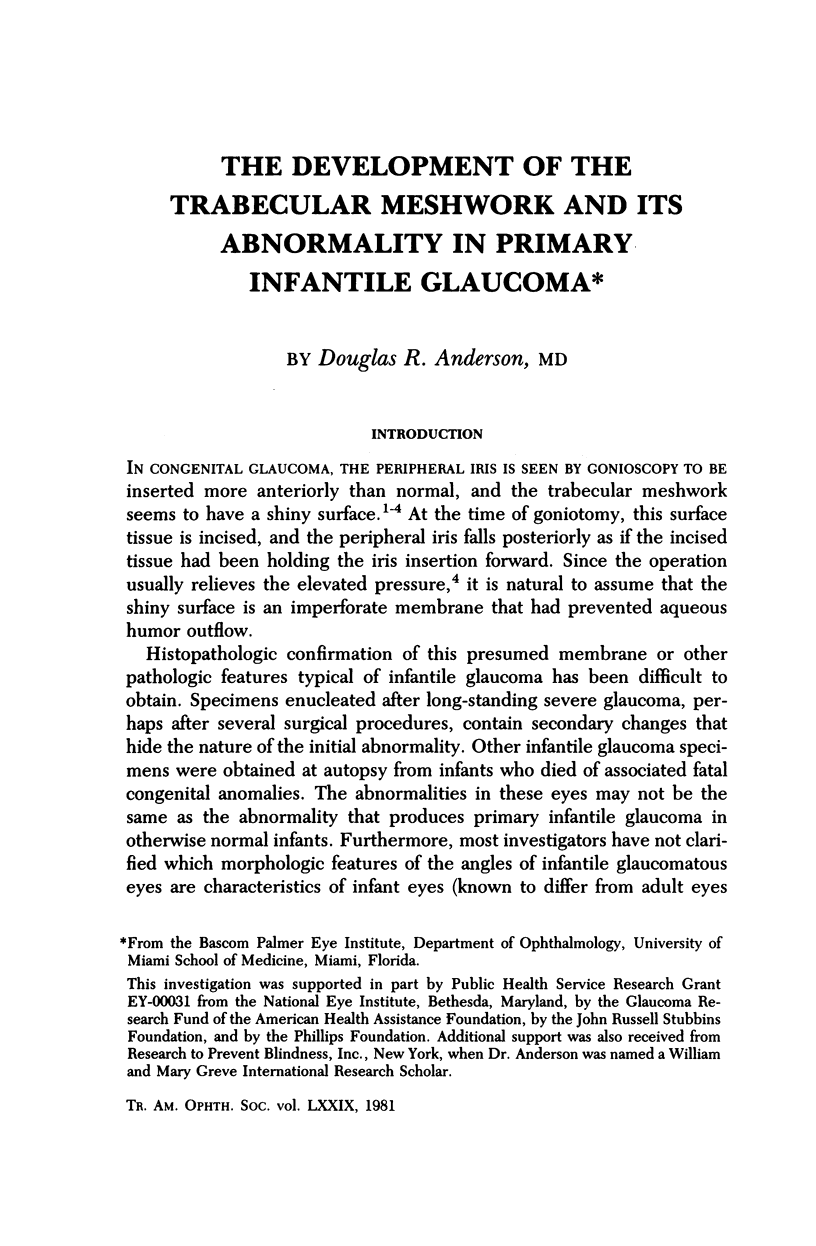
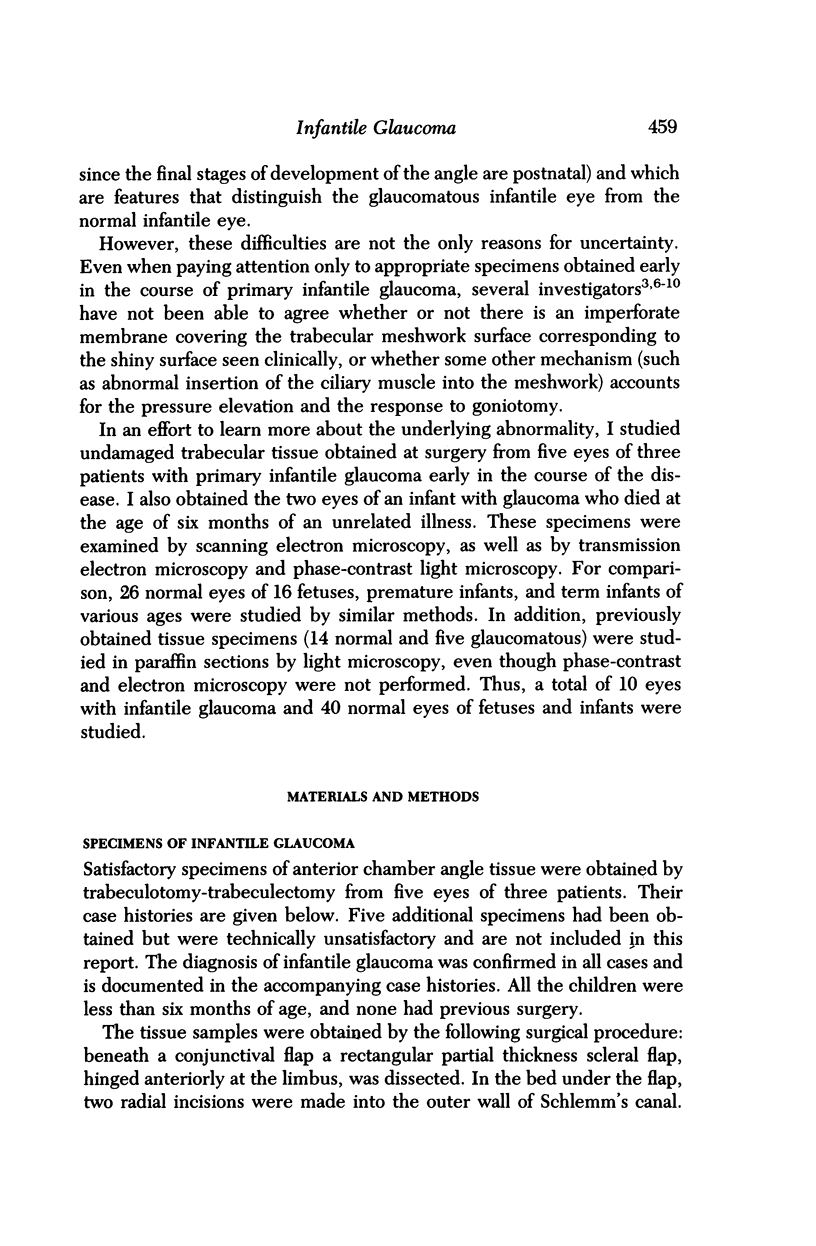
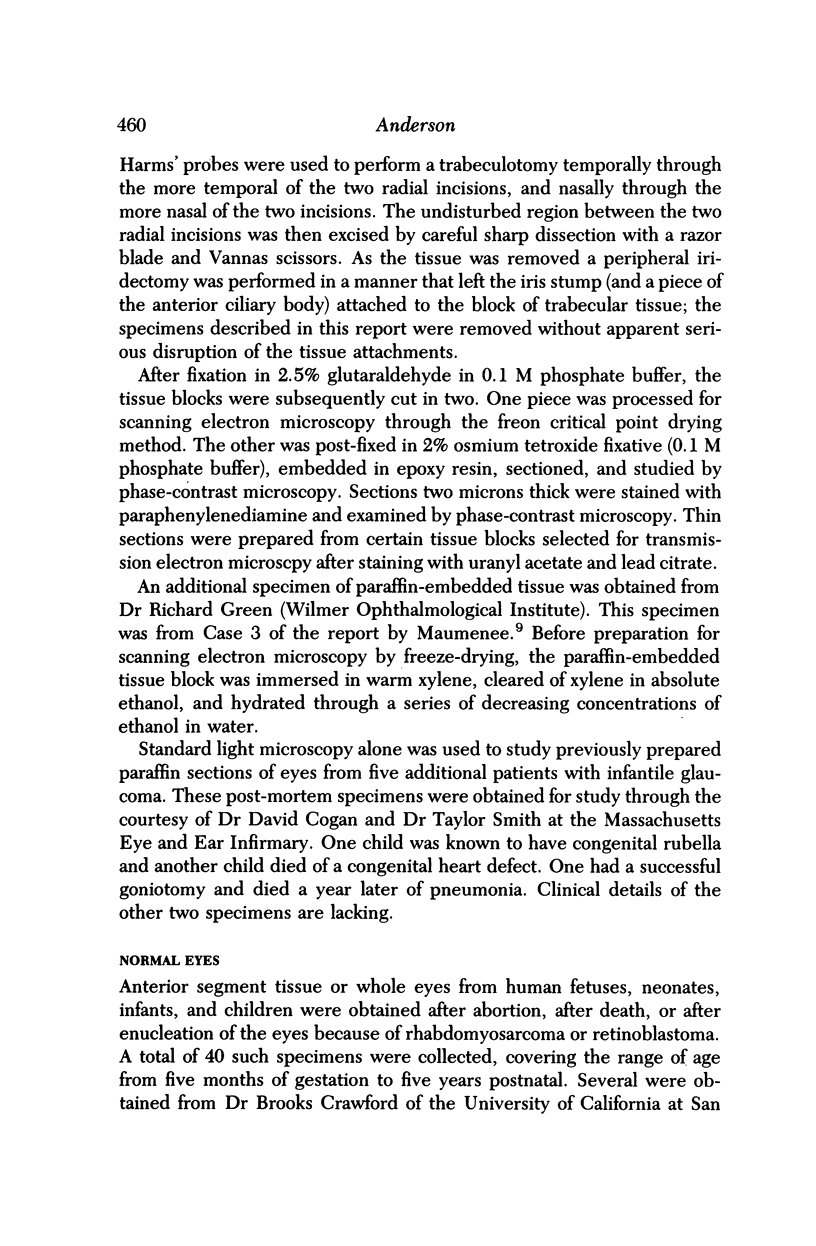
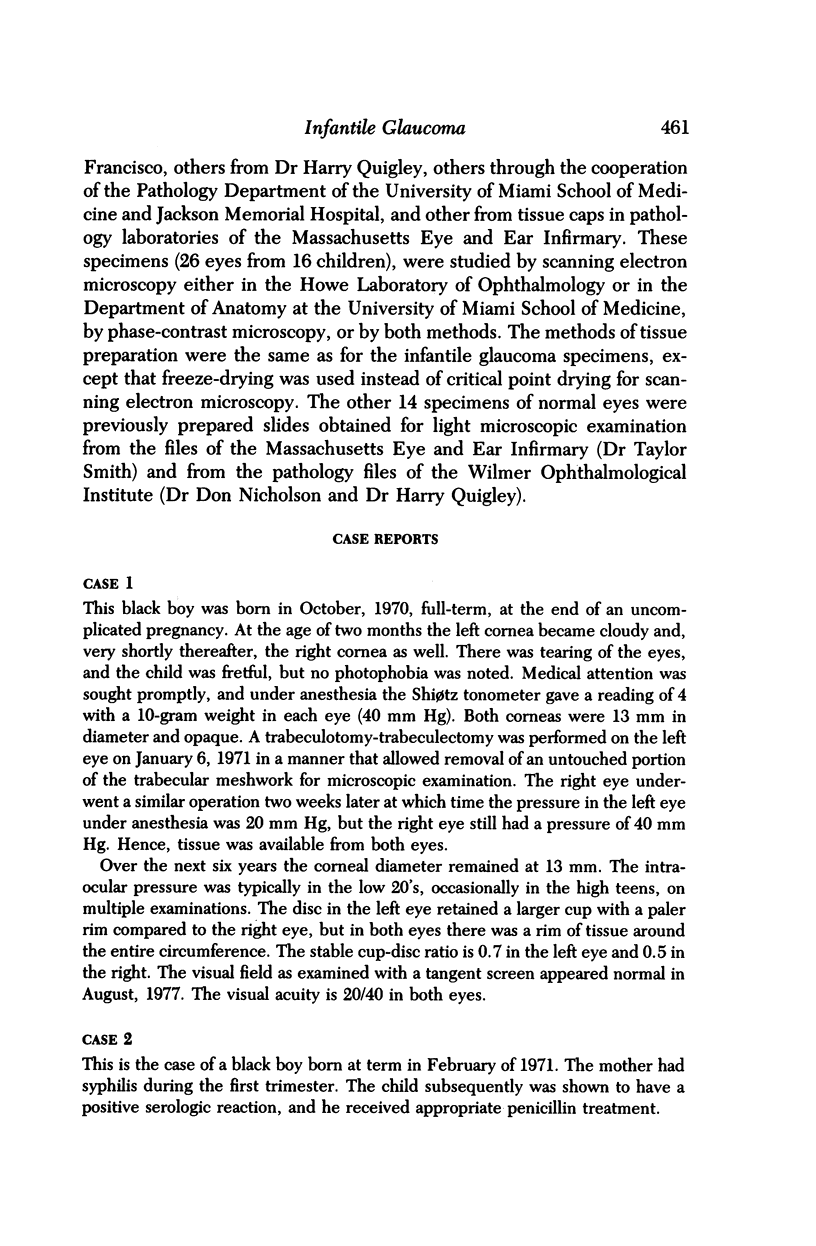
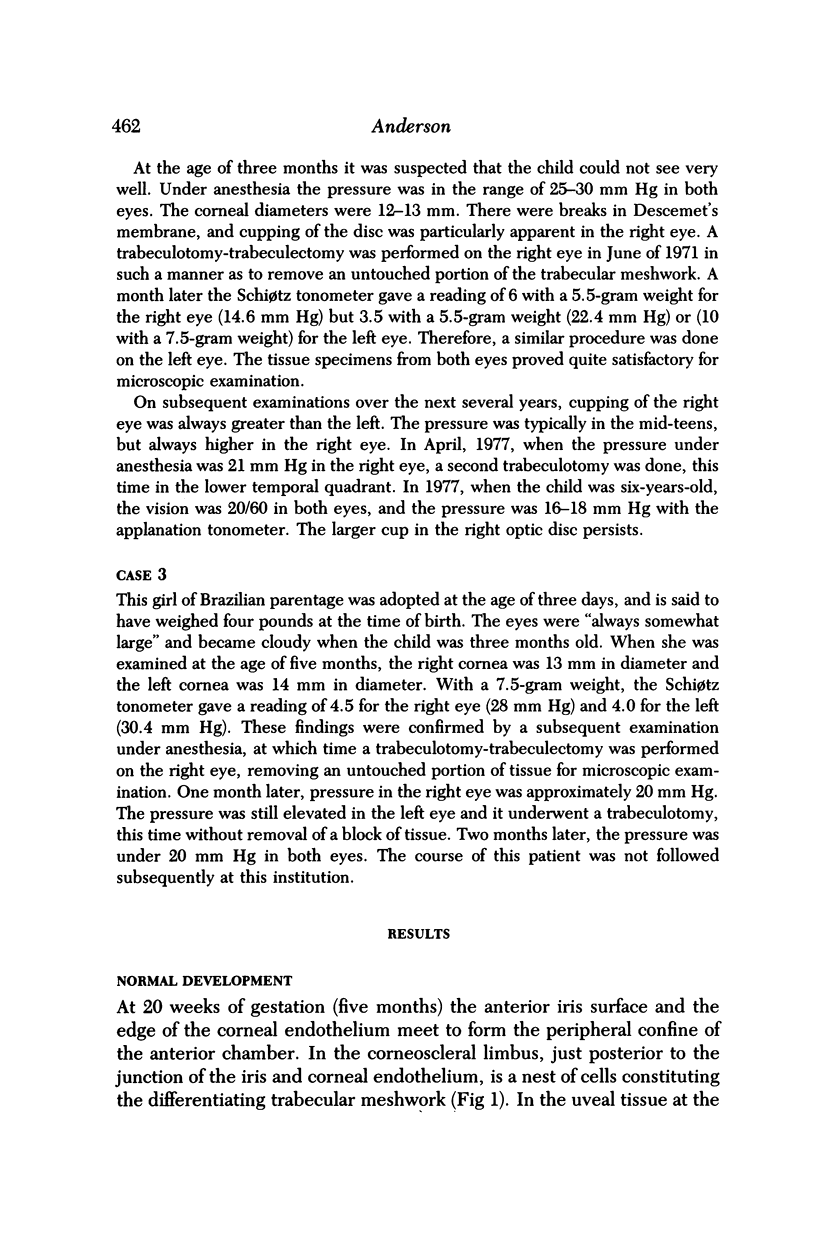
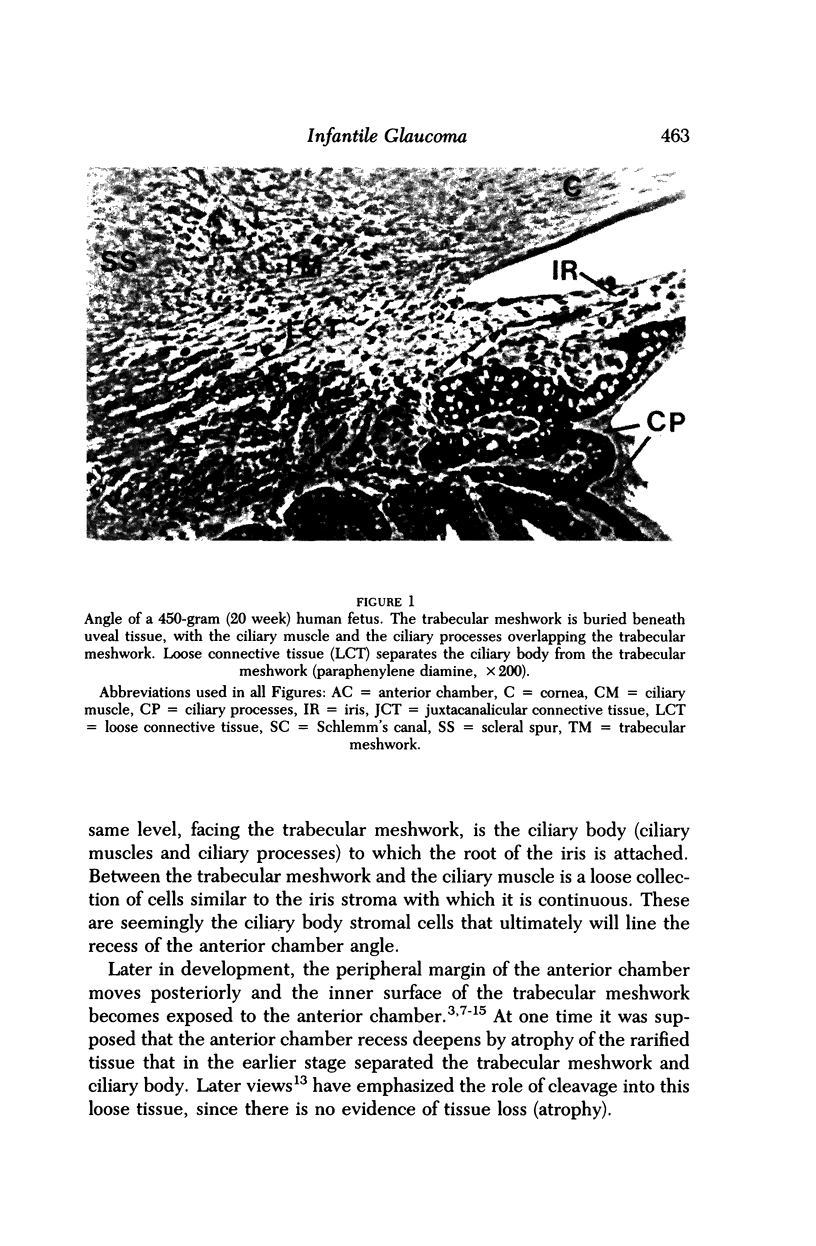
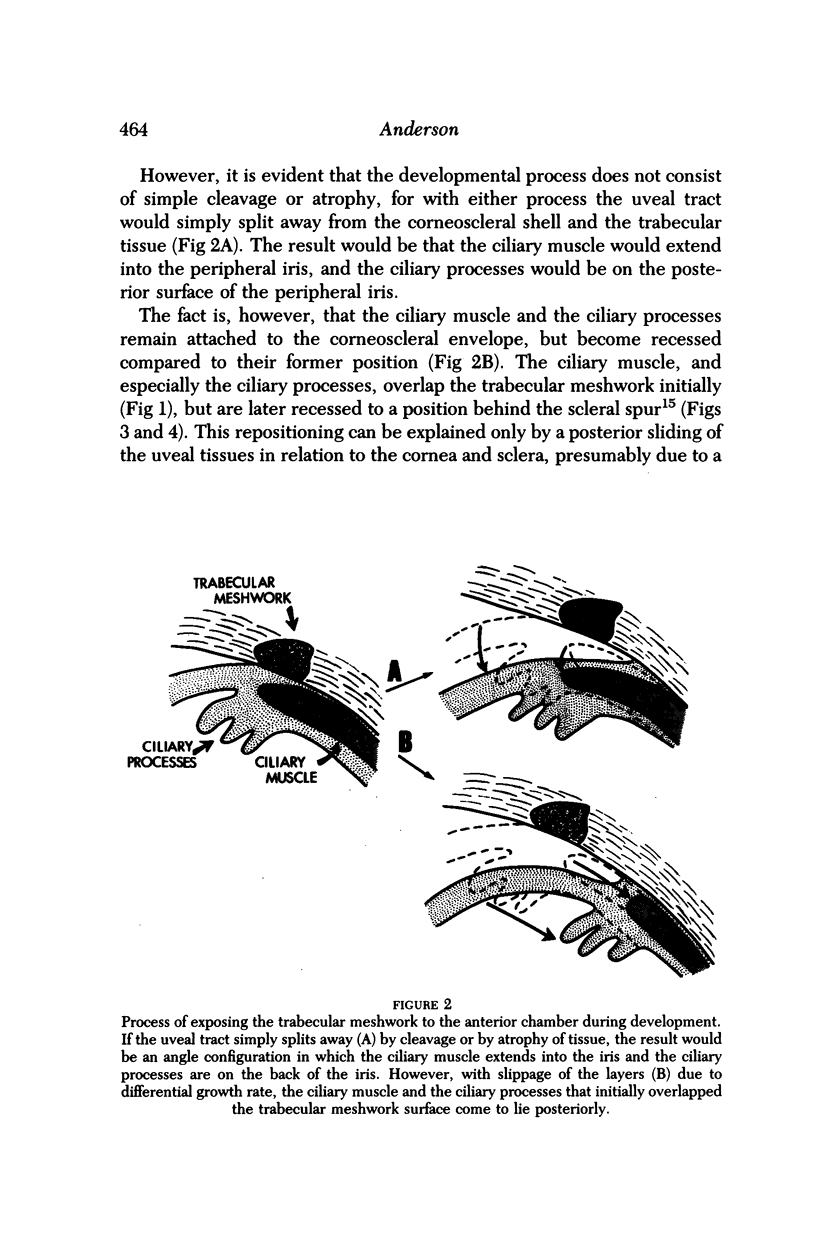
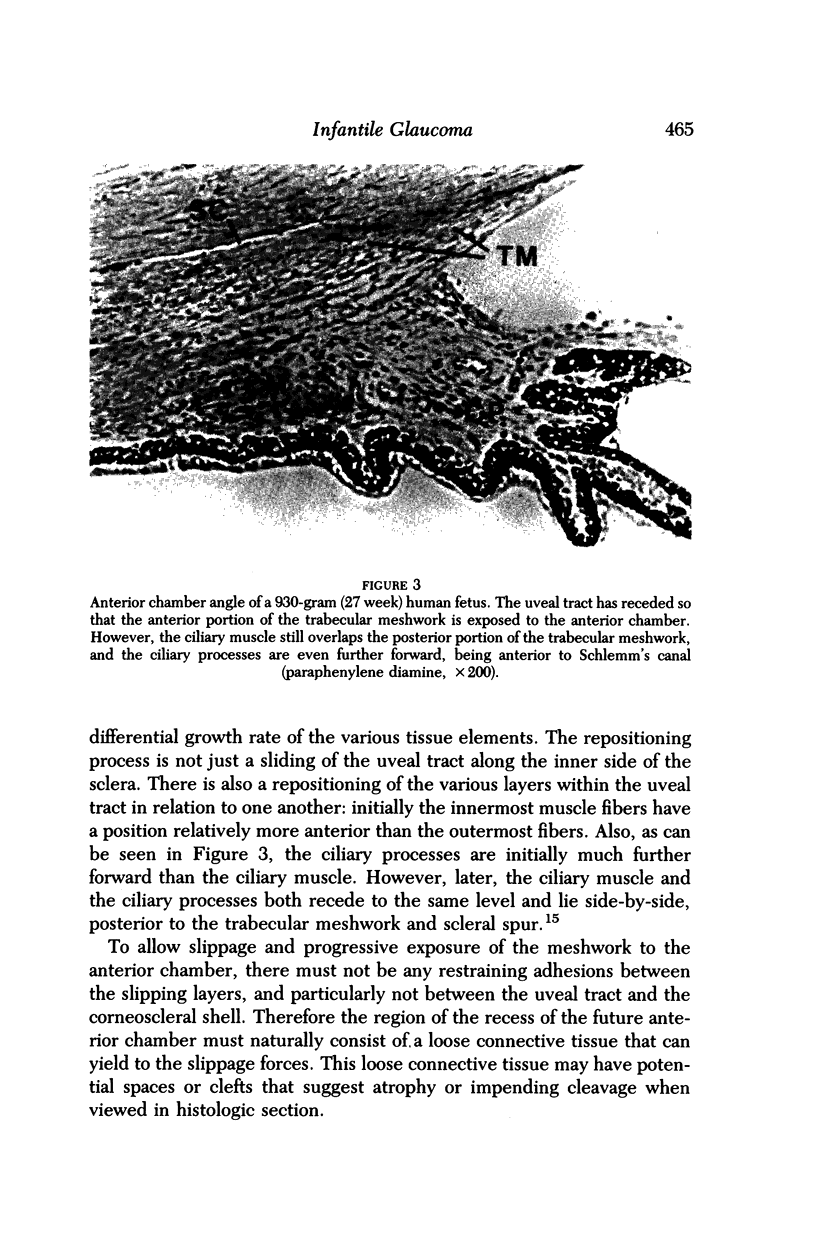
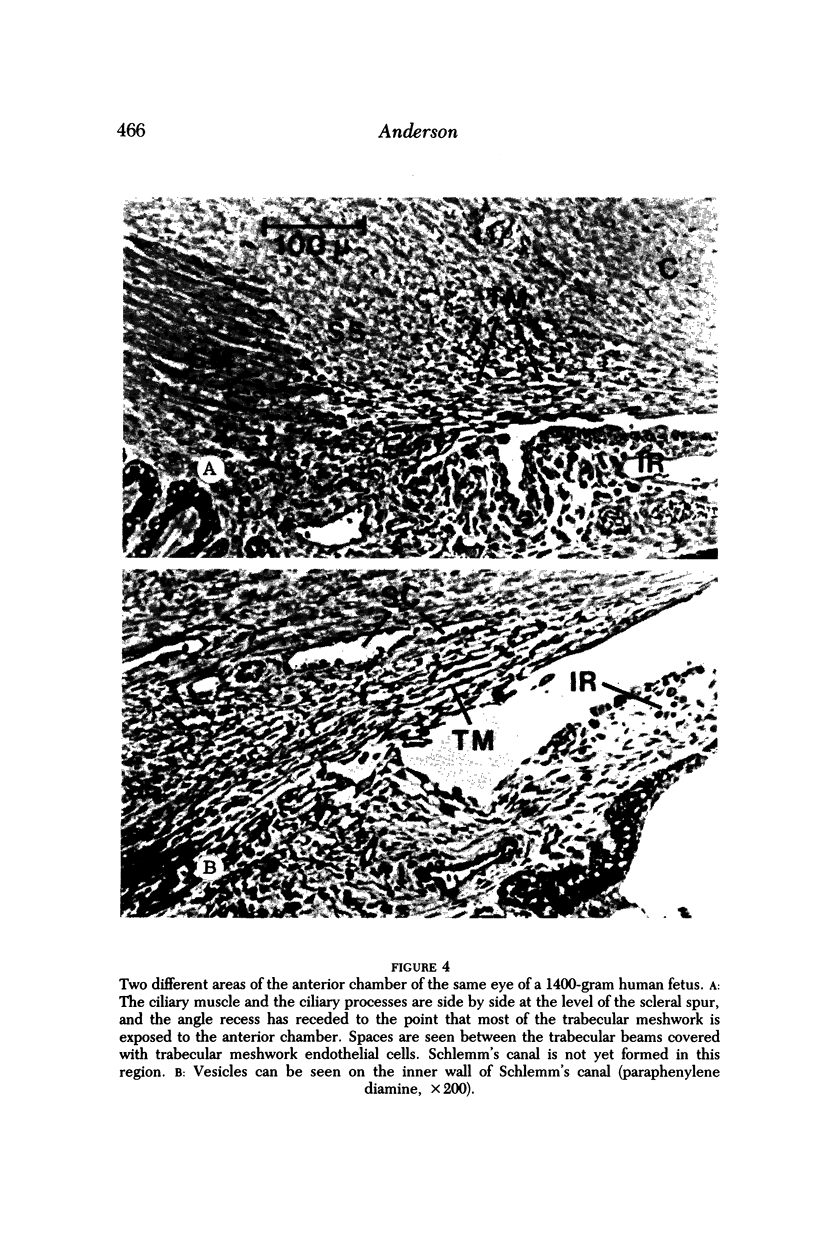
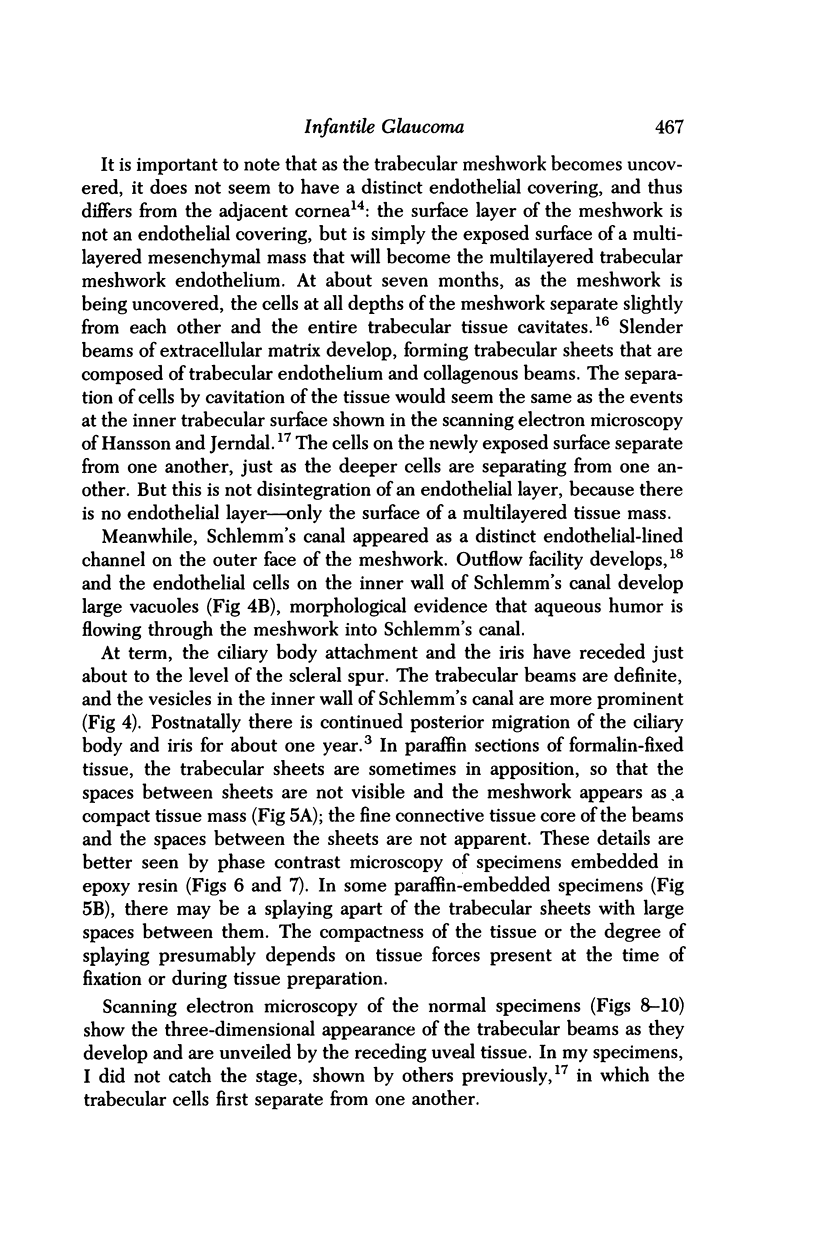
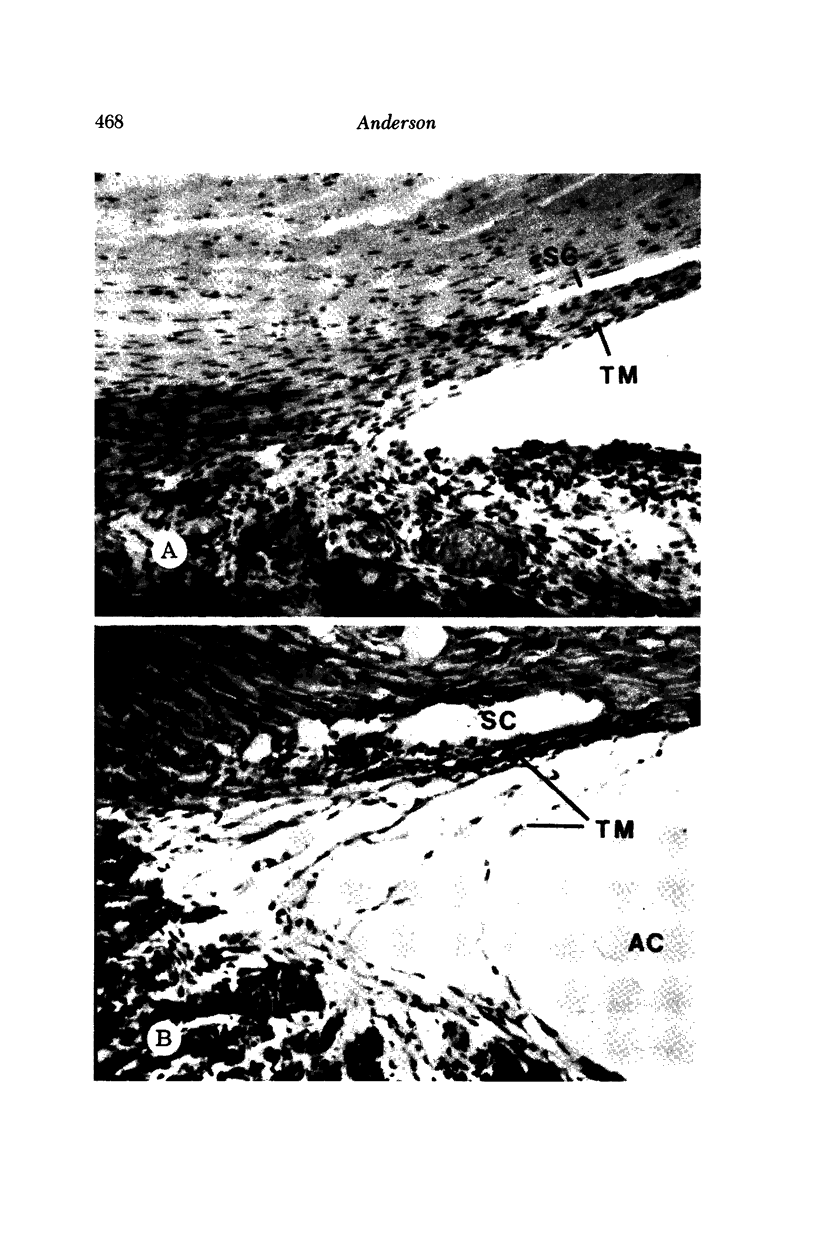
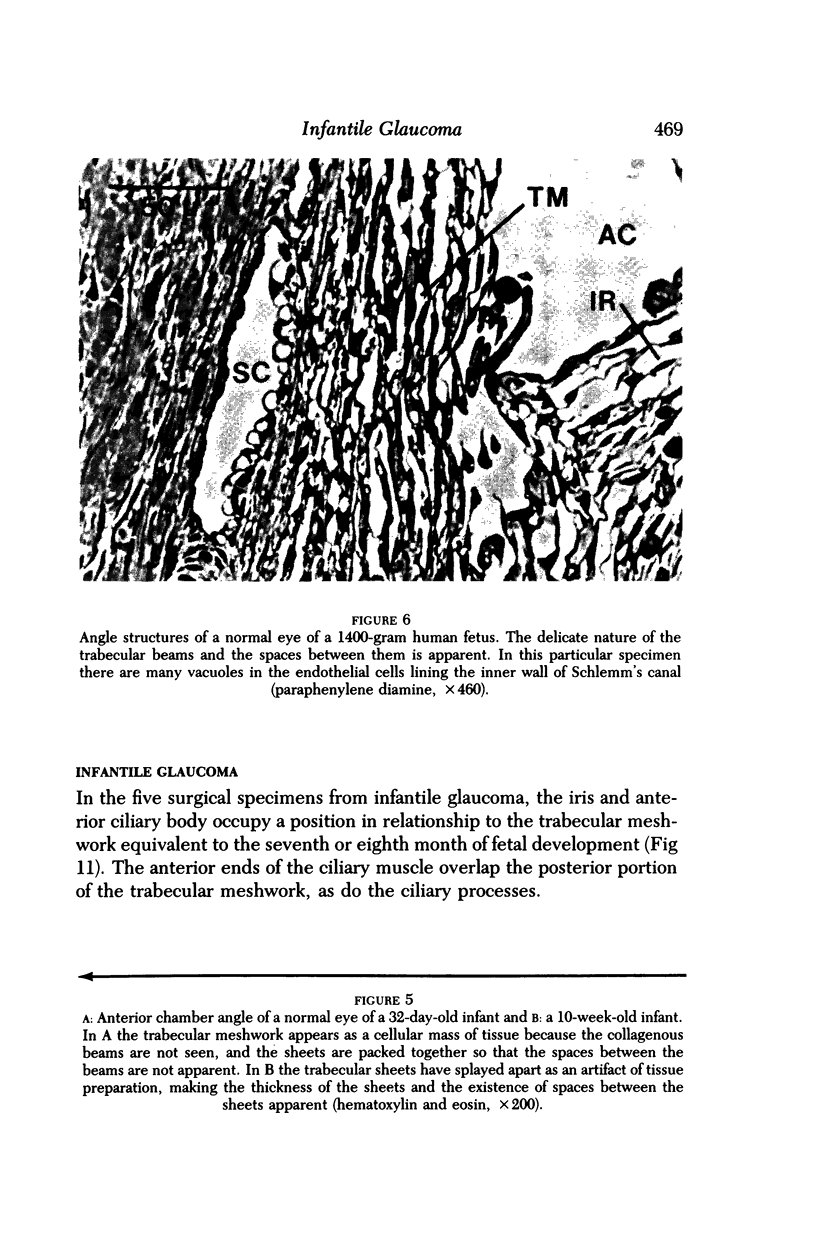
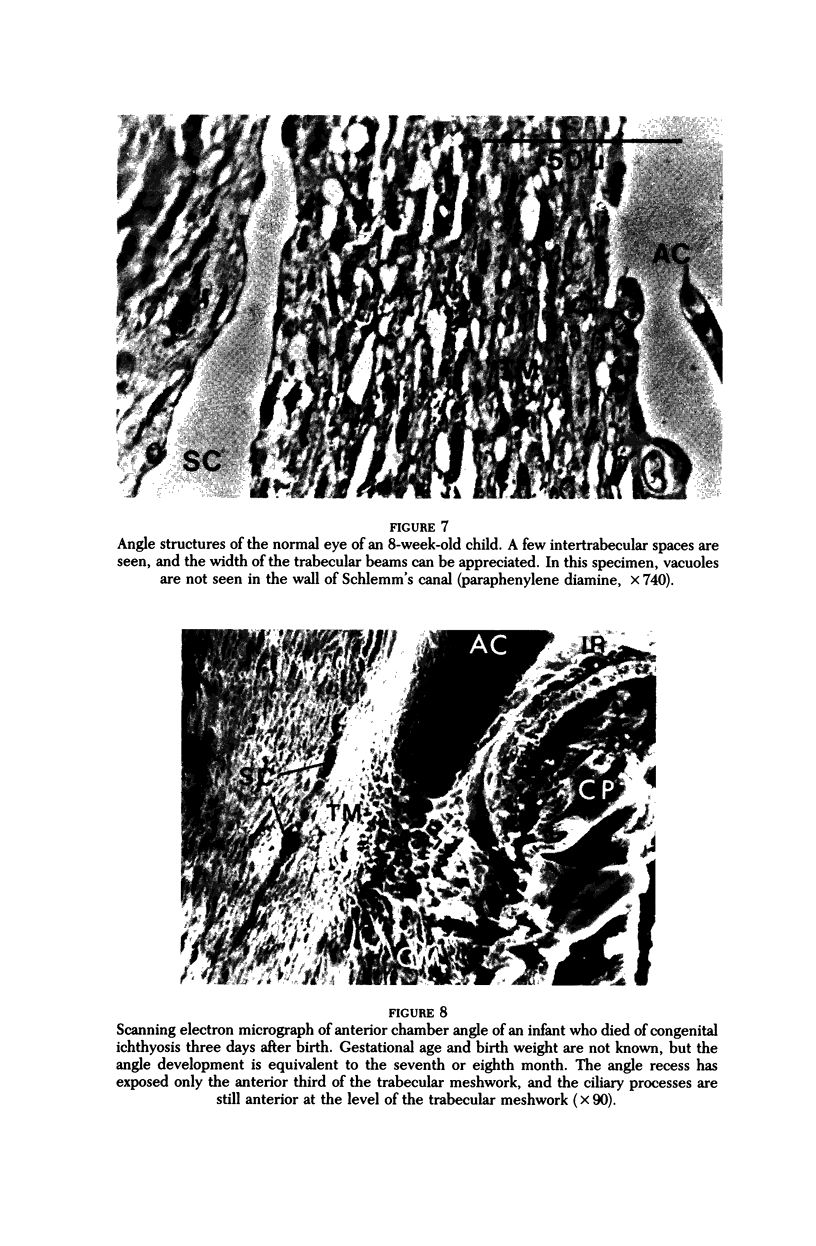

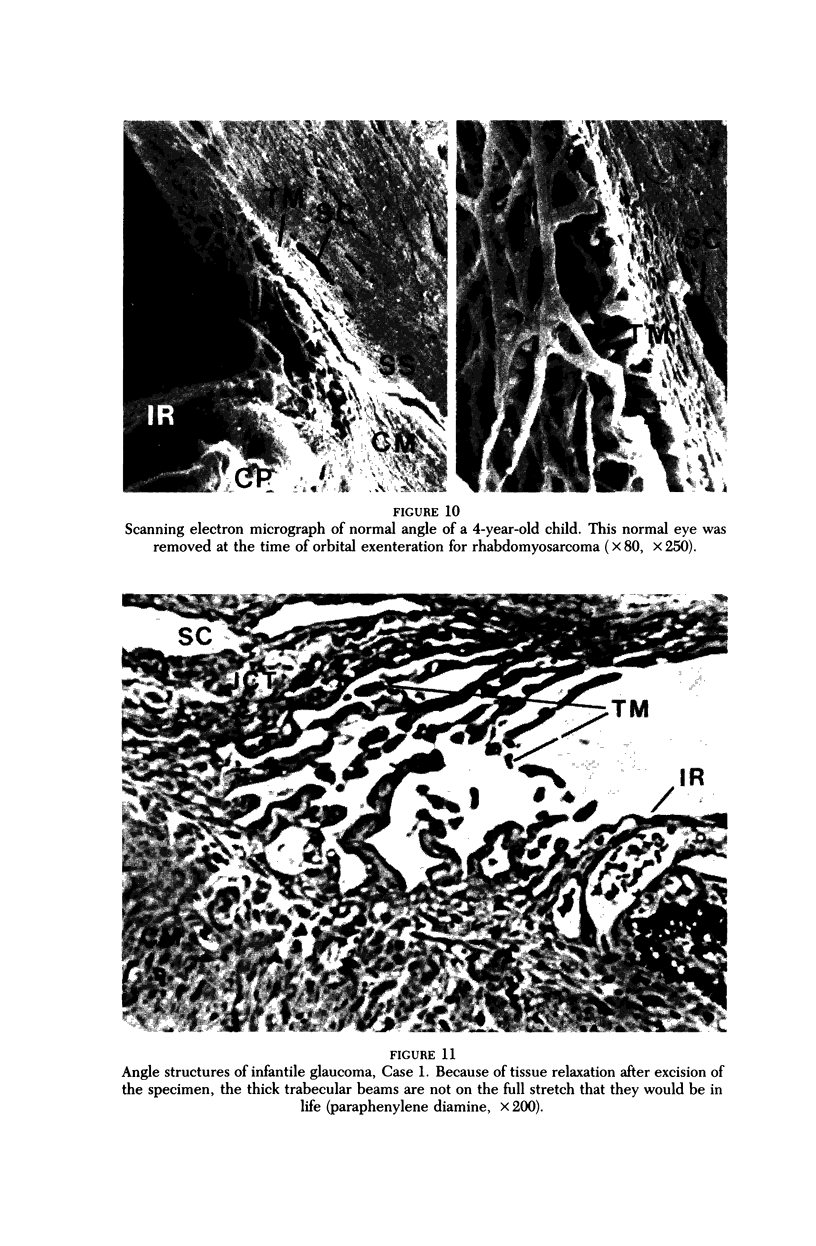
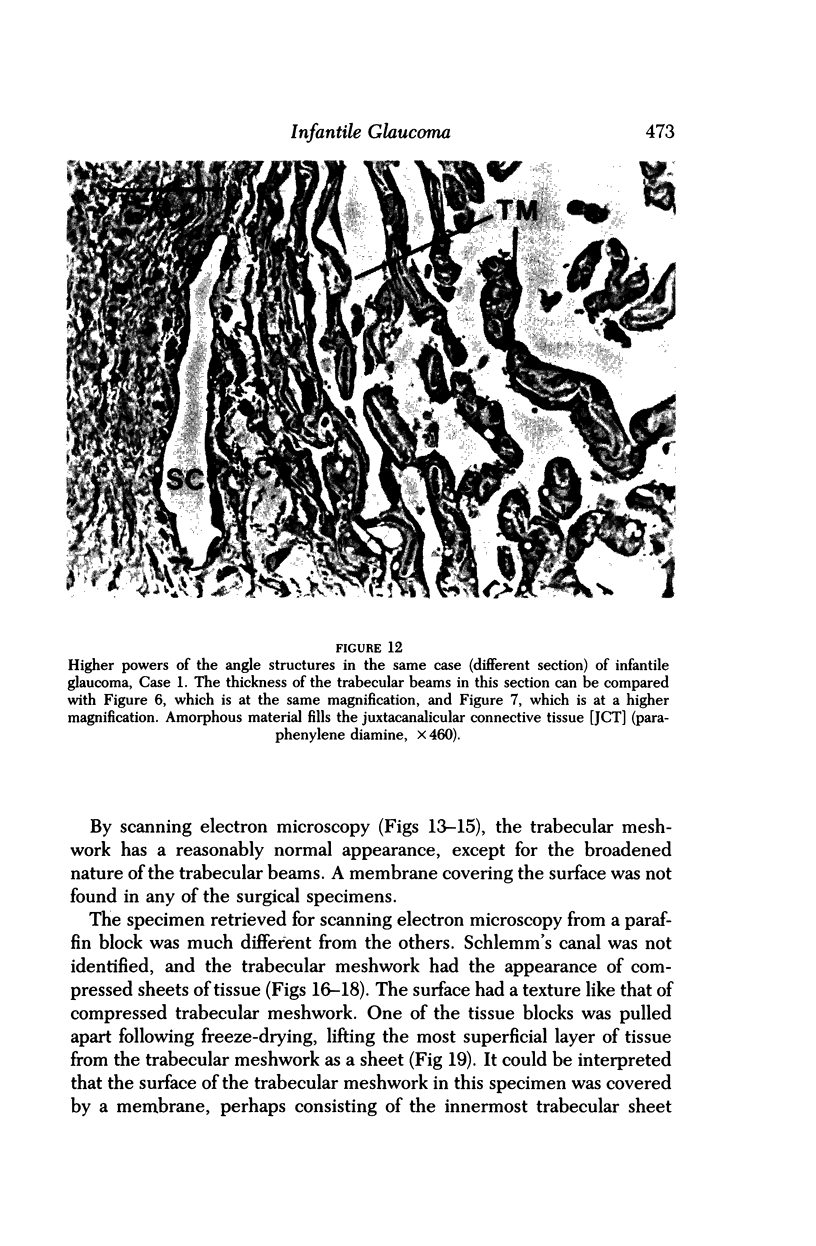
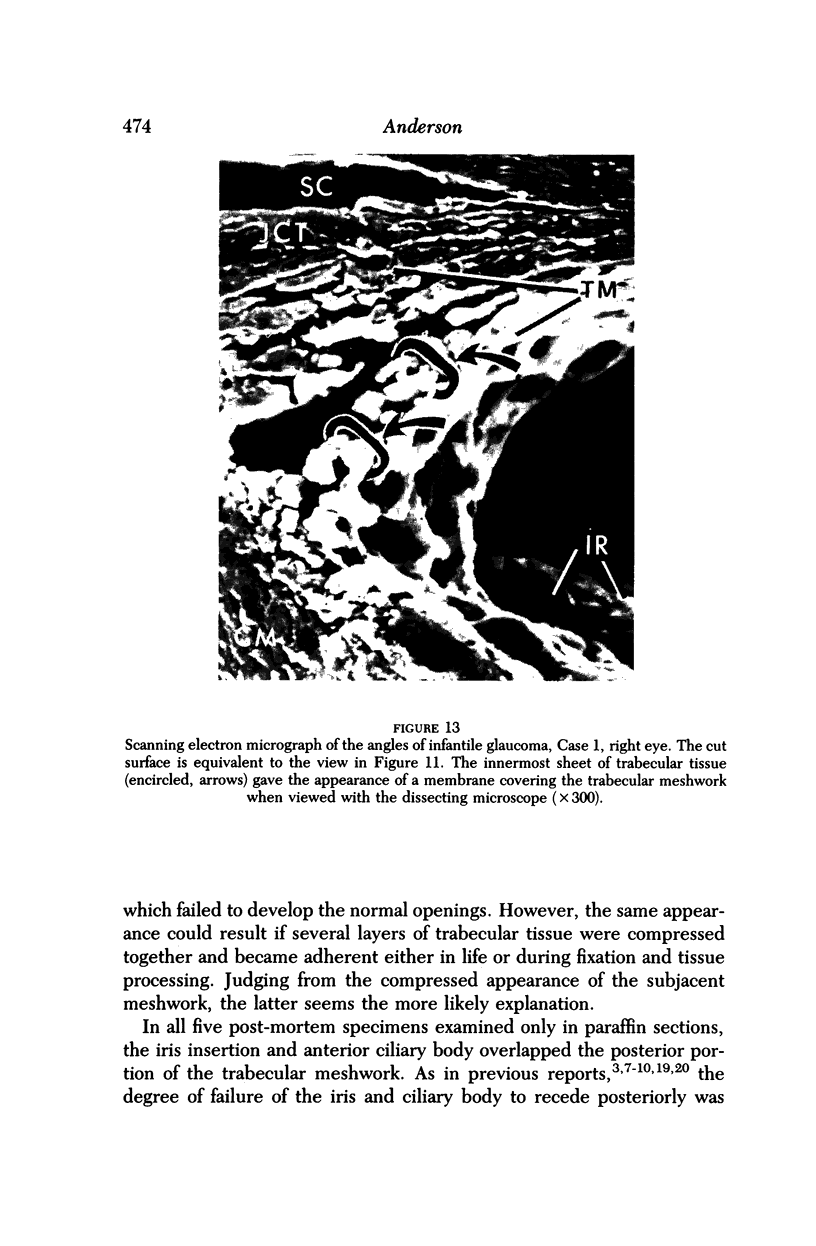

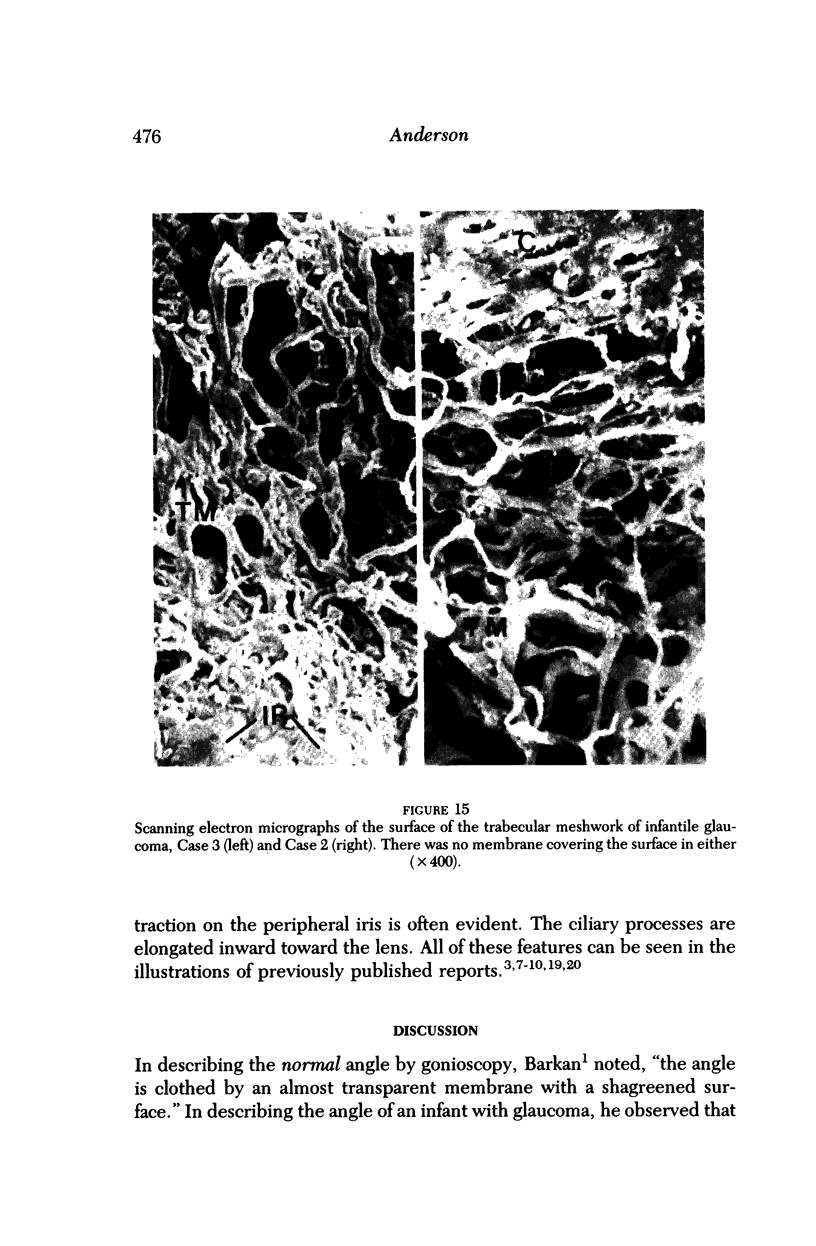
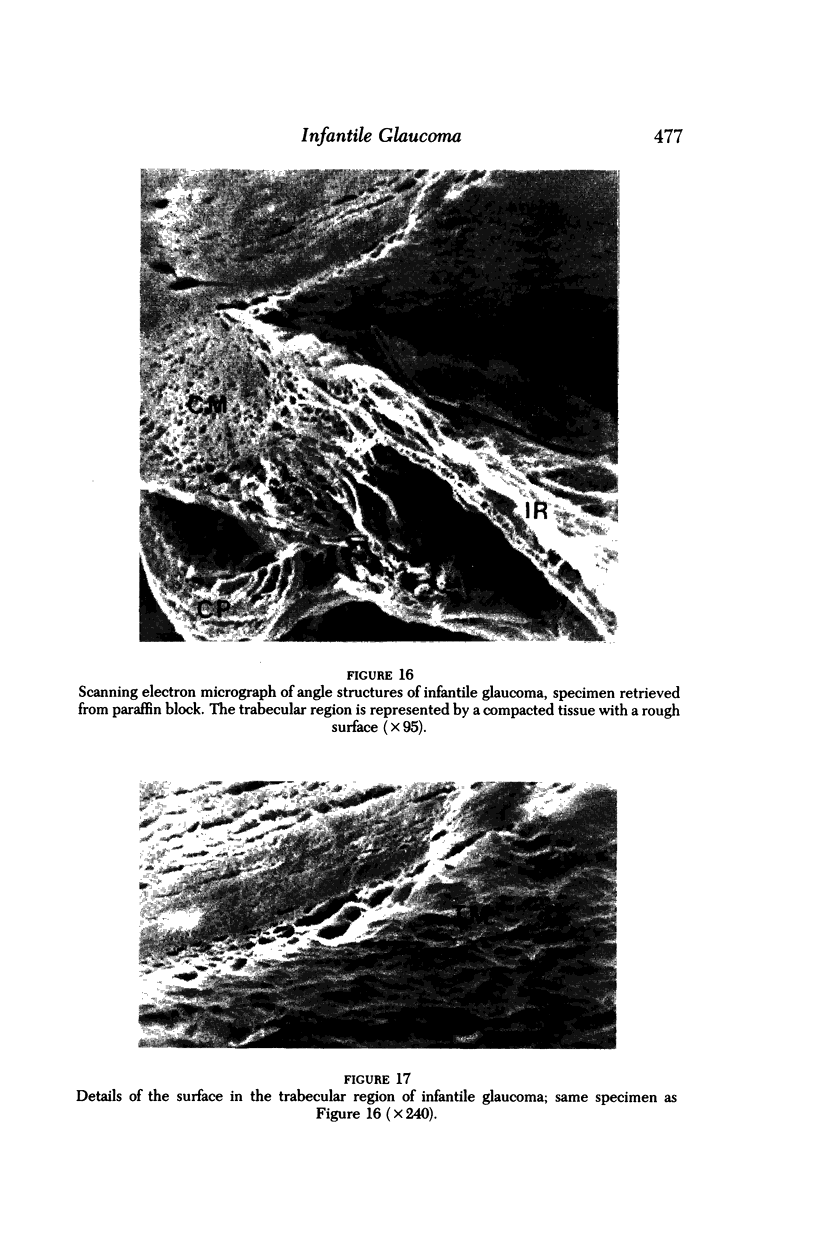
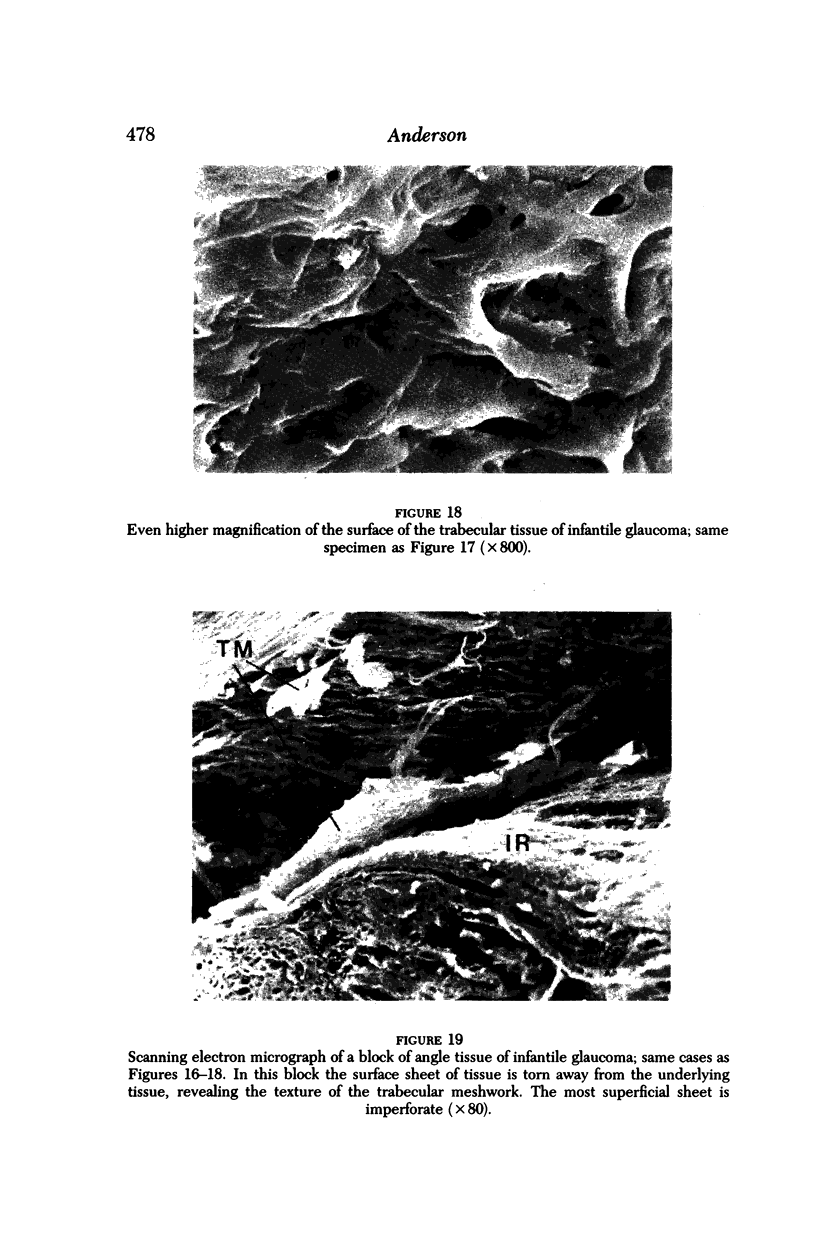
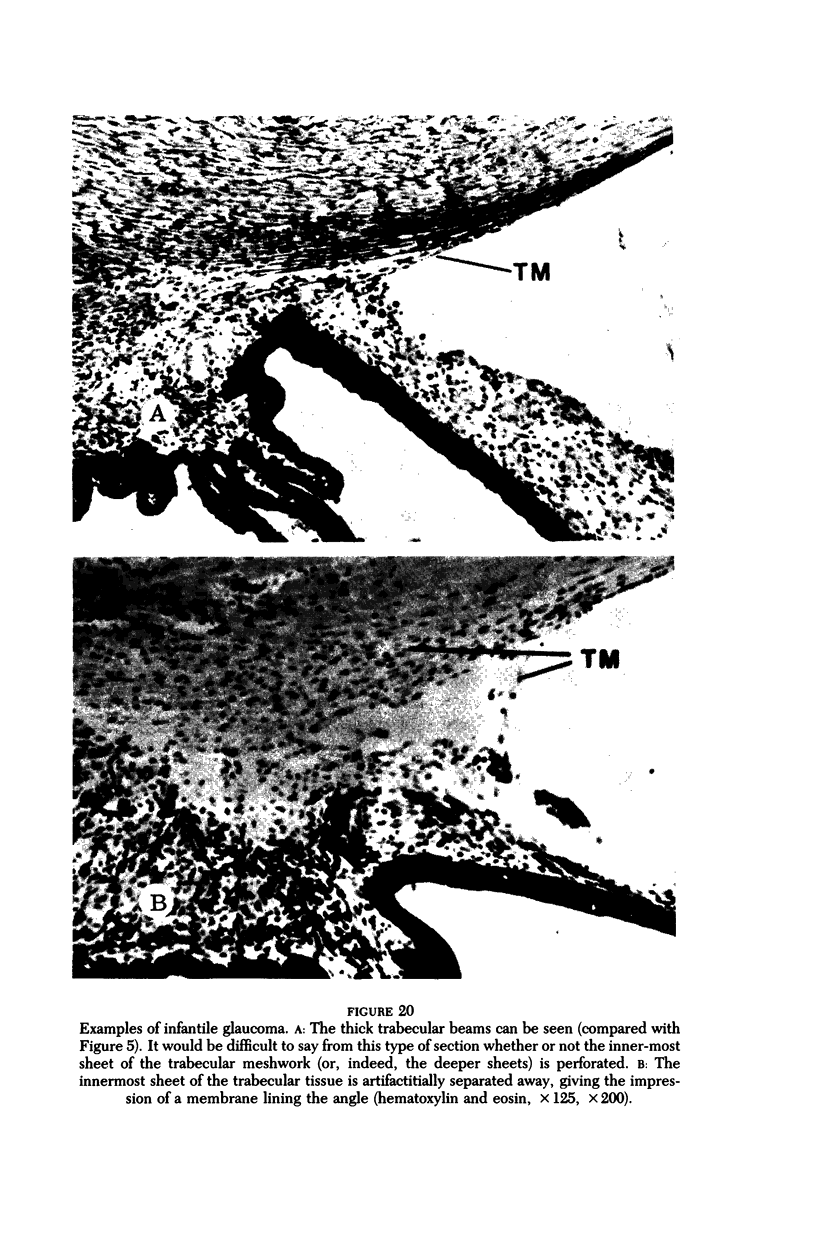
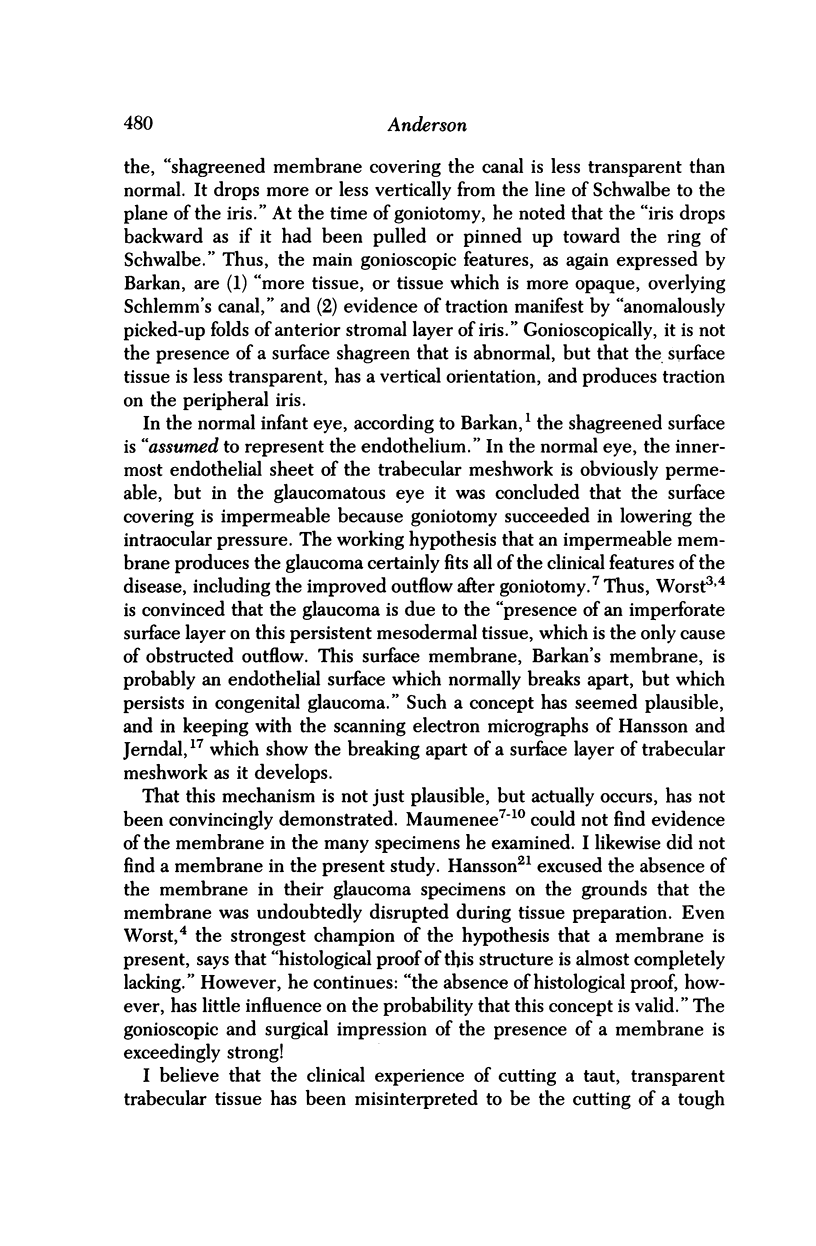
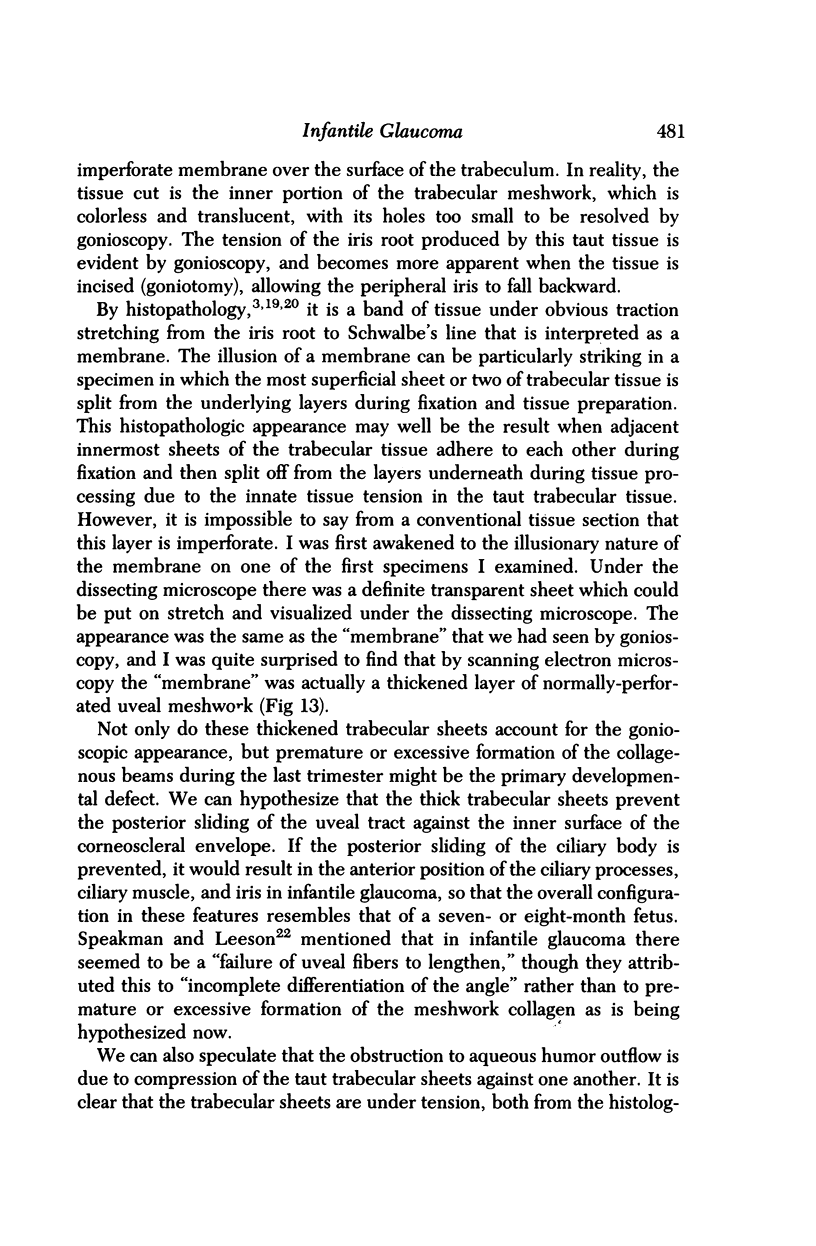
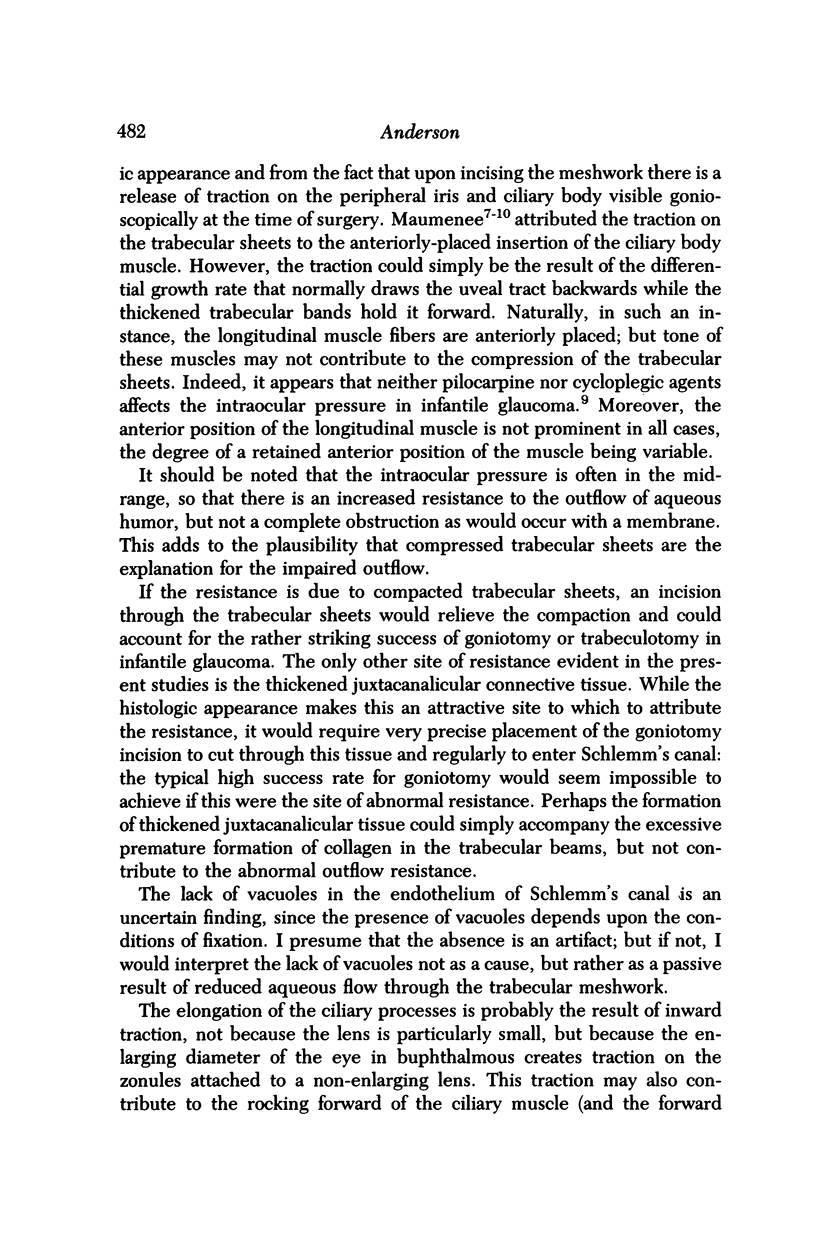
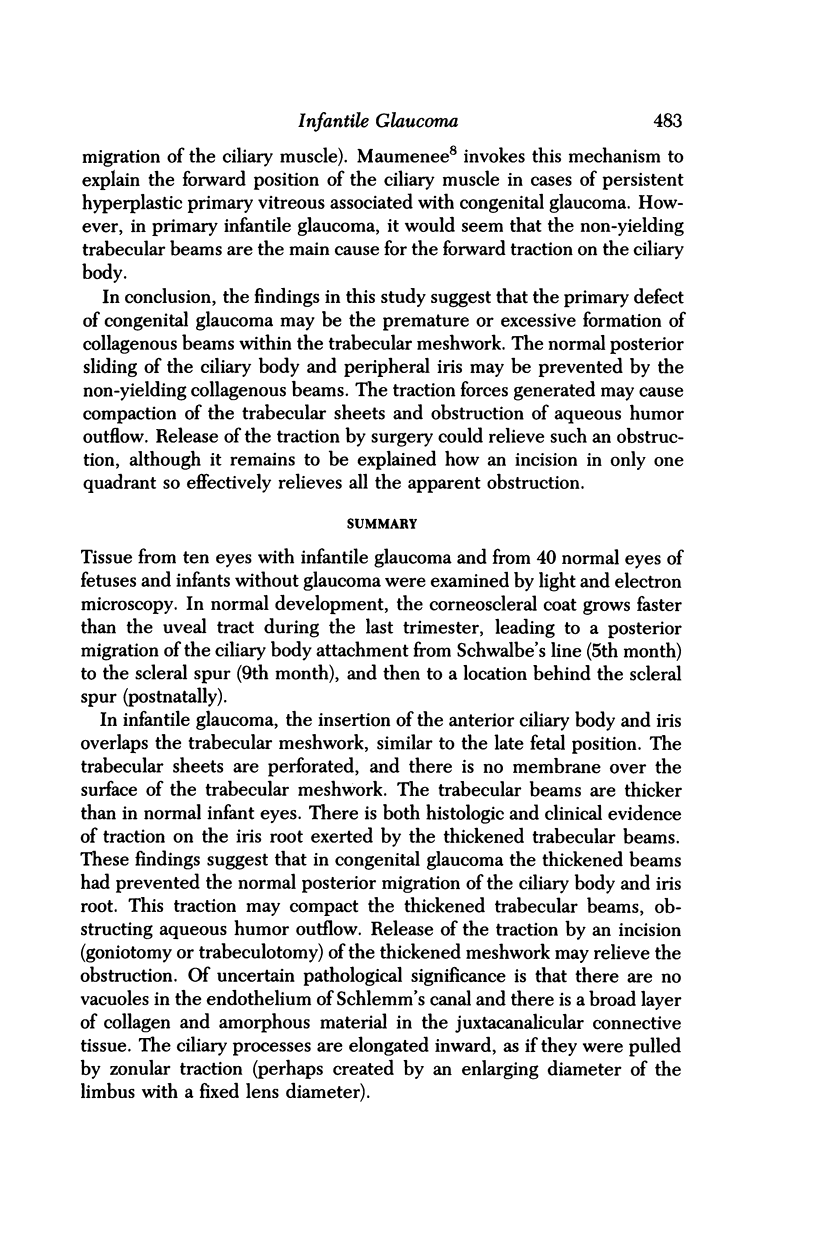
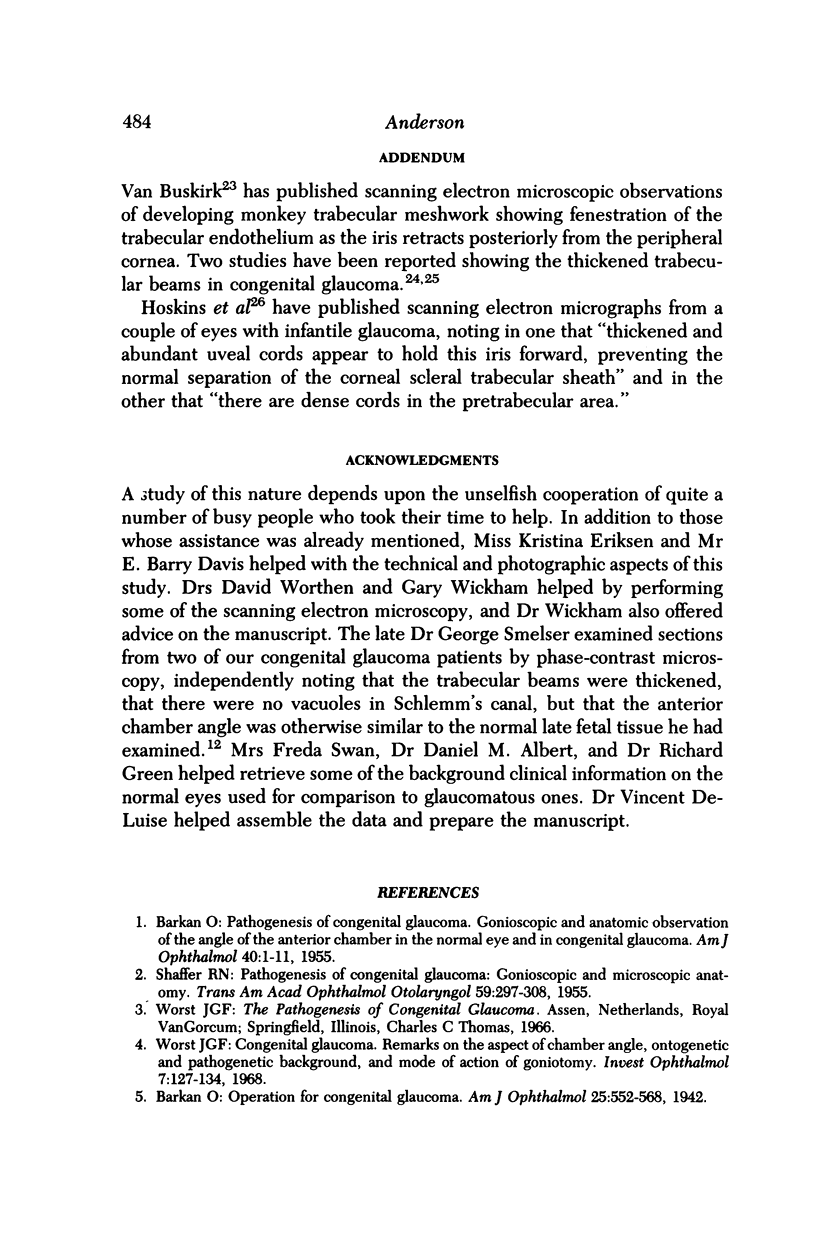
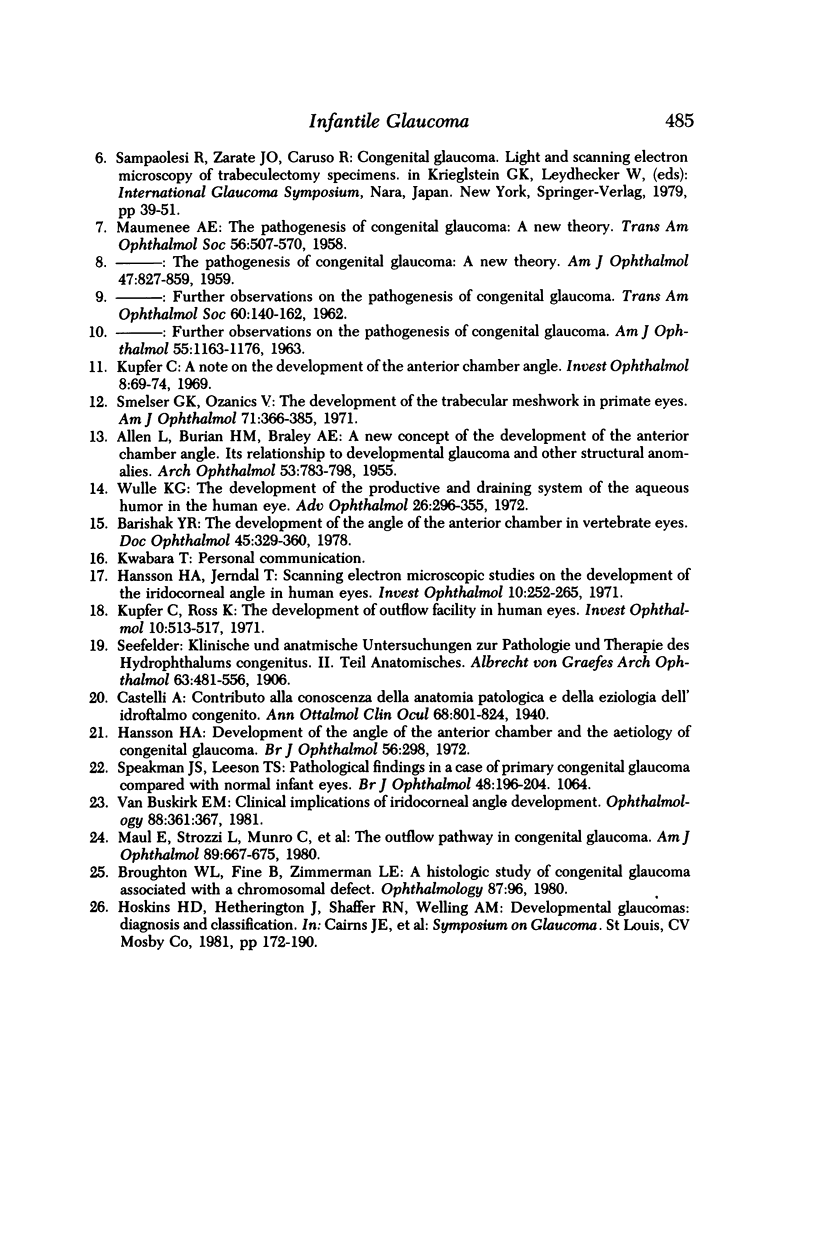
Images in this article
Selected References
These references are in PubMed. This may not be the complete list of references from this article.
- ALLEN L., BURIAN H. M., BRALEY A. E. A new concept of the development of the anterior chamber angle; its relationship to developmental glaucoma and other structural anomalies. AMA Arch Ophthalmol. 1955 Jun;53(6):783–798. doi: 10.1001/archopht.1955.00930010791002. [DOI] [PubMed] [Google Scholar]
- BARKAN O. Pathogenesis of congenital glaucoma: gonioscopic and anatomic observation of the angle of the anterior chamber in the normal eye and in congenital glaucoma. Am J Ophthalmol. 1955 Jul;40(1):1–11. [PubMed] [Google Scholar]
- Barishak Y. R. The development of the angle of the anterior chamber in vertebrate eyes. Doc Ophthalmol. 1978 Aug 1;45(2):329–360. doi: 10.1007/BF00161671. [DOI] [PubMed] [Google Scholar]
- Hansson H. A., Jerndal T. Scanning electron microscopic studies on the development of the iridocorneal angle in human eyes. Invest Ophthalmol. 1971 Apr;10(4):252–265. [PubMed] [Google Scholar]
- Kupfer C. A note on the development of the anterior chamber angle. Invest Ophthalmol. 1969 Feb;8(1):69–74. [PubMed] [Google Scholar]
- Kupfer C., Ross K. The development of outflow facility in human eyes. Invest Ophthalmol. 1971 Jul;10(7):513–517. [PubMed] [Google Scholar]
- MAUMENEE A. E. The pathogenesis of congenital glaucoma: a new theory. Trans Am Ophthalmol Soc. 1958;56:507–570. [PMC free article] [PubMed] [Google Scholar]
- Maul E., Strozzi L., Muñoz C., Reyes C. The outflow pathway in congenital glaucoma. Am J Ophthalmol. 1980 May;89(5):667–673. doi: 10.1016/0002-9394(80)90286-x. [DOI] [PubMed] [Google Scholar]
- SHAFFER R. N. Pathogenesis of congenital glaucoma; gonioscopic and microscopic anatomy. Trans Am Acad Ophthalmol Otolaryngol. 1955 May-Jun;59(3):297–308. [PubMed] [Google Scholar]
- SPEAKMAN J. S., LEESON T. S. PATHOLOGICAL FINDINGS IN A CASE OF PRIMARY CONGENITAL GLAUCOMA COMPARED WITH NORMAL INFANT EYES. Br J Ophthalmol. 1964 Apr;48:196–204. doi: 10.1136/bjo.48.4.196. [DOI] [PMC free article] [PubMed] [Google Scholar]
- Smelser G. K., Ozanics V. The development of the trabecular meshwork in primate eyes. Am J Ophthalmol. 1971 Jan;71(1 Pt 2):366–385. doi: 10.1016/0002-9394(71)90412-0. [DOI] [PubMed] [Google Scholar]
- Van Buskirk E. M. Clinical implications of iridocorneal angle development. Ophthalmology. 1981 Apr;88(4):361–367. doi: 10.1016/s0161-6420(81)35024-6. [DOI] [PubMed] [Google Scholar]
- Worst J. G. Congenital glaucoma. Remarks on the aspect of chamber angle, ontogenetic and pathogenetic background, and mode of action of goniotomy. Invest Ophthalmol. 1968 Apr;7(2):127–134. [PubMed] [Google Scholar]


















